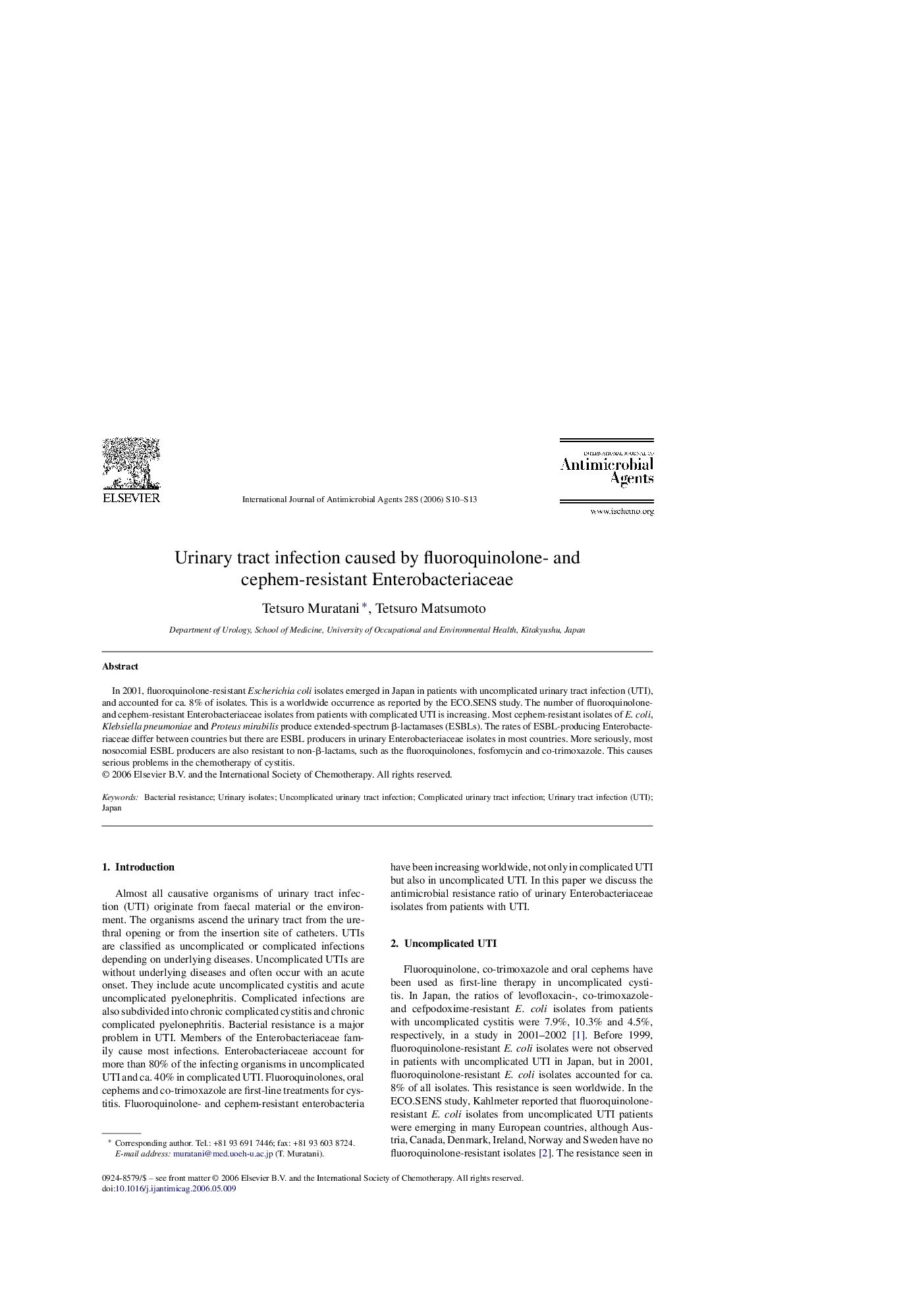| Article ID | Journal | Published Year | Pages | File Type |
|---|---|---|---|---|
| 3361530 | International Journal of Antimicrobial Agents | 2006 | 4 Pages |
In 2001, fluoroquinolone-resistant Escherichia coli isolates emerged in Japan in patients with uncomplicated urinary tract infection (UTI), and accounted for ca. 8% of isolates. This is a worldwide occurrence as reported by the ECO.SENS study. The number of fluoroquinolone- and cephem-resistant Enterobacteriaceae isolates from patients with complicated UTI is increasing. Most cephem-resistant isolates of E. coli, Klebsiella pneumoniae and Proteus mirabilis produce extended-spectrum β-lactamases (ESBLs). The rates of ESBL-producing Enterobacteriaceae differ between countries but there are ESBL producers in urinary Enterobacteriaceae isolates in most countries. More seriously, most nosocomial ESBL producers are also resistant to non-β-lactams, such as the fluoroquinolones, fosfomycin and co-trimoxazole. This causes serious problems in the chemotherapy of cystitis.
